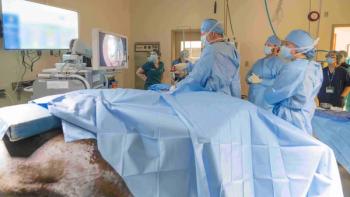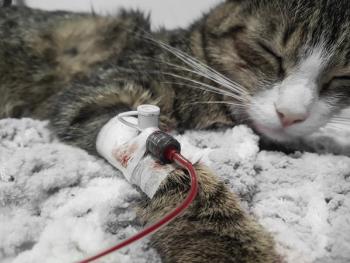
Managing the arthritic patient in today's economy (Proceedings)
Just as in the human population, the incidence of osteoarthritis in veterinary patients is very high. Many of the developmental diseases as well as traumatic injuries ultimately become cases of osteoarthritis management. As with any chronic progressive (and largely incurable) disease, the treatment can be frustrating. In fact, treatment of arthritis is easy when the client is patient, willing, and has a lot of money.
Just as in the human population, the incidence of osteoarthritis in veterinary patients is very high. Many of the developmental diseases as well as traumatic injuries ultimately become cases of osteoarthritis management. As with any chronic progressive (and largely incurable) disease, the treatment can be frustrating. In fact, treatment of arthritis is easy when the client is patient, willing, and has a lot of money. In most cases, however, the clinician is faced with a number of treatment options to balance against economic realities and expected responses. This session will review the components of osteoarthritis management and provide some logical framework on which to make real-world decisions.
Pathophysiology basics
Taking some of the mystery out of osteoarthritis pathophysiology allows the practitioner to develop a rational approach to therapy and to make sense of the various treatment options. This session will very briefly review the disease mechanisms with an emphasis on clinical application.
Treatment goals
Perhaps the first step in achieving success in managing osteoarthritis is to understand the treatment goals and to effectively communicate those goals to the client. Realistic expectations as to outcome, timeline, and cost will dramatically increase the level of satisfaction on the part of both the veterinarian and the client. Osteoarthritis is a progressive disease which means that despite our best efforts we may ultimately be facing a losing battle. This realization does not imply that increased comfort, function and quality of life are unlikely – it merely suggests that the client should not expect a complete "cure". Furthermore, arthritic patients often have a variety of related problems that will hamper our ability to provide the level of success we desire (including muscle atrophy, joint fibrosis, obesity etc). Addressing these problems and discussing them with clients is vital. Lastly, since the condition is continuous and the patient changes in many ways, continual monitoring and adjustments to the therapy are important – another aspect of treatment that must be communicated up front to the client.
Treatment options
Treatment for osteoarthritis may be broken down into different components. The physical side of the therapeutic plan includes managing weight, controlling exercise, and instituting some physical rehabilitation scheme. The medical side of the plan may include varying combinations of NSAIDs, neutraceuticals, hyaluronic acids, special diets, glycosaminoglycans, and other supplements. There are also surgical solutions to some osteoarthritis cases, but surgery will not be emphasized in this presentation.
The less weight that diseased joints are forced to support, the less stress and therefore the less damage they will sustain. Within reason, these patients should be kept quite lean. Helping the clients with weight management is important and will be affected by activity and appetite (which will in turn affect and be affected by the success and side effects of treatment). Some degree of exercise is important to maintain muscle tone and joint mobility, but the amount and type will need to be tailored to the individual patient (and client) and adjusted as the animal's abilities improve or worsen. Similarly, if specific deficiencies are noted, or if the animal is unable to exercise, specific rehabilitation schemes can be devised. In most cases, the owners will be able to provide this care at home if they are shown how and if the clinician works with them.
The various components of medical management will be discussed. The initial decisions for the clinician center on considering the likely efficacy of the options and comparing that to their cost and the severity of disease. Many patients will require a combination of modalities and there is rarely only one appropriate regimen. Through careful monitoring of disease progression, additions or subtractions to the regimen as well as modifications in dose or frequency will be necessary.
Treatment assessment
Monitoring the success (or lack of success) of therapy is important not only to know if one is being effective, but also so that doses may be adjusted or exercises modified. The client will be the ultimate judge of how well the animal is doing, but the clinician must be careful to ask the correct questions and filter the answers. Some objective measures are easily available including range of motion, limb circumference, radiographic changes and even simple tests of weight-bearing. Evaluation of lameness should be performed but can be misleading due to excitement, disposition or just the variable nature of the clinical signs. Determining specific tasks that will serve as measures of success is helpful – it is best to select tasks that are performed daily and that are important to the client. Examples might include how eager the animal is to play at the conclusion of the daily walk, the animal's ability to jump into the back of the truck, or the animal's interest and ability to perform specific tricks or activities.
Based on the response to the evaluations, the clinician may find improvement and be able to increase activity or decrease medication. Note that every change will affect other aspects of the therapeutic plan so it is best to change one thing at a time. Making careful notes in the record is very important and will facilitate effective telephone conversations as well.
Newsletter
From exam room tips to practice management insights, get trusted veterinary news delivered straight to your inbox—subscribe to dvm360.




